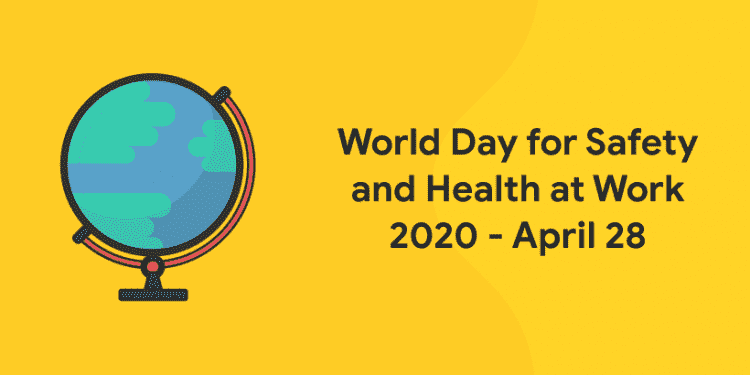World Day for Safety and Health at Work is observed year after year on 28 April to support safety and health in the workplace and those who have died from work-related injury or illness at the workplace, are honored by Worker’s Memorial Day. In this article we will discuss World Day for Safety and Health at Work 2020 – April 28; the theme of which is mainly based on COVID 19 pandemic.
Most people spend a major part of their day working in organizations to earn their livelihood. Therefore, It is extremely necessary to maintain healthy standards at the workplace so, that any kind of accidents, work-related injury, etc. can be avoided. To create awareness about the safety of people at the workplace, among people, World Day for Safety and Health at Work is celebrated. Let us learn more about this day through this article.
Let us inform you that this day was affirmed by the International Labour Organisation (ILO) to uphold the prevention of occupational accidents and diseases globally. In short, it is an awareness-raising campaign that focuses on international attention on emerging trends in the field of occupational safety and health.

World Day for Safety and Health at Work 2020 – April 28: Objective behind the celebration
The main objective of World Day for Safety and Health at Work is to focus international attention on the magnitude of the problem and to promote healthy work culture so that several work-related deaths and injuries can be reduced. It is interesting to note that 28 April is also an International Commemoration Day for Dead and Injured Workers which was organized in the entire world by the trade union movement since 1996.
Identifying the complexity that the governments, employers, workers, and the societies are facing worldwide to battle the COVID-19 pandemic, the World Day for Safety and Health at Work 2020 –April 28, will focus on addressing the outbreak of infectious diseases at work, focusing on the COVID-19 outbreak.
World day theme announced earlier for 2020 was “violence and harassment in the world of work”, now has been replaced in view of the current global crisis. As part of the 2020 World Day for safety and health at work campaign, the ILO was planning to produce a global report, highlighting how a comprehensive Occupational Safety and Health or OSH framework at both national and workplace levels could address violence and harassment in the world of work. But this theme is now replaced with the COVID 19 pandemic theme. The technical products and promotional material on violence and harassment will continue to be made available for this theme as well.
Get Free Mock Tests for various Competitive Exams !!!
The concern is growing over the ongoing increase in COVID-19 infections in some parts of the world and the ability to sustain declining rates in others. Governments, employers, workers, and their organizations face massive challenges as they try to battle the COVID-19 pandemic and protect safety and health at work. Beyond this immediate crisis, there are also concerns about resuming activity in a manner that sustains progress made in suppressing spread.
The World Day for Safety and Health at Work will focus on addressing the outbreak of infectious diseases at work, focusing on the COVID-19 pandemic in particular. The aim is to stimulate national tripartite dialogue on safety and health at work. The International Labour Organisation is utilizing this day to raise awareness on the adoption of safe practices in workplaces and the role that occupational safety and health (OSH) services play. It will also work on the medium to long-term, including recovery and future awareness, in particular, integrating measures into Occupational Safety and Health management systems and policies at the national and enterprise levels.
Click Here to attempt free mock tests of different Banking Exams!!!













